If there’s one experience from our world trip that stands out for its raw beauty and challenge, it’s trekking through the wild jungles of Sumatra in search of orangutans. It was muddy. It was sweaty. It was hard. And it was absolutely worth it.
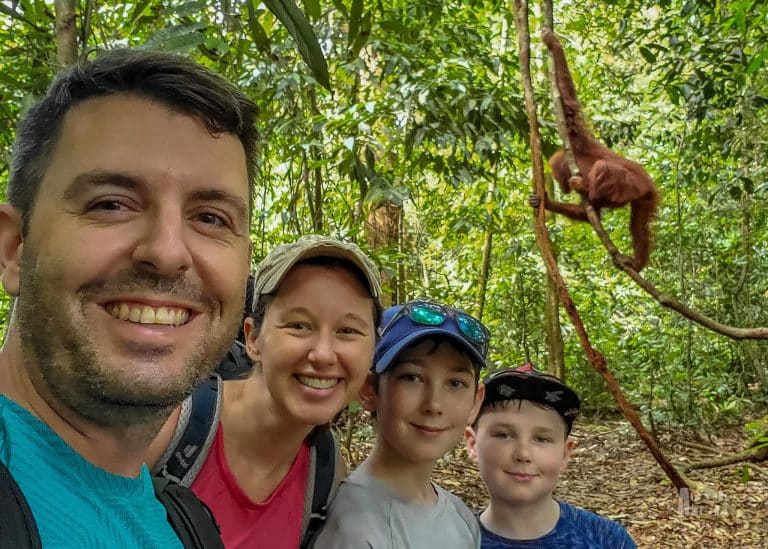
This true wilderness adventure pushed us beyond our comfort zones and rewarded us with something far greater than glimpses of orangutans in their natural habitat. We left the jungle with scratches and bruises, sore legs, bug bites, and soggy clothes — but a sense of accomplishment we’ll carry for the rest of our lives.
If you’re up for a challenge and want to connect deeply with nature, this is the trek for you.
Gunung Leuser National Park
Located on the edge of Gunung Leuser National Park, the village of Bukit Lawang is the gateway to one of the richest tropical ecosystems in Southeast Asia. The park is a UNESCO-listed site and one of only two places in the world where critically endangered Sumatran orangutans still live in the wild. It’s also home to Thomas’s leaf monkeys, long-tailed macaques, gibbons, hornbills, and even elusive species like sun bears and Sumatran tigers.
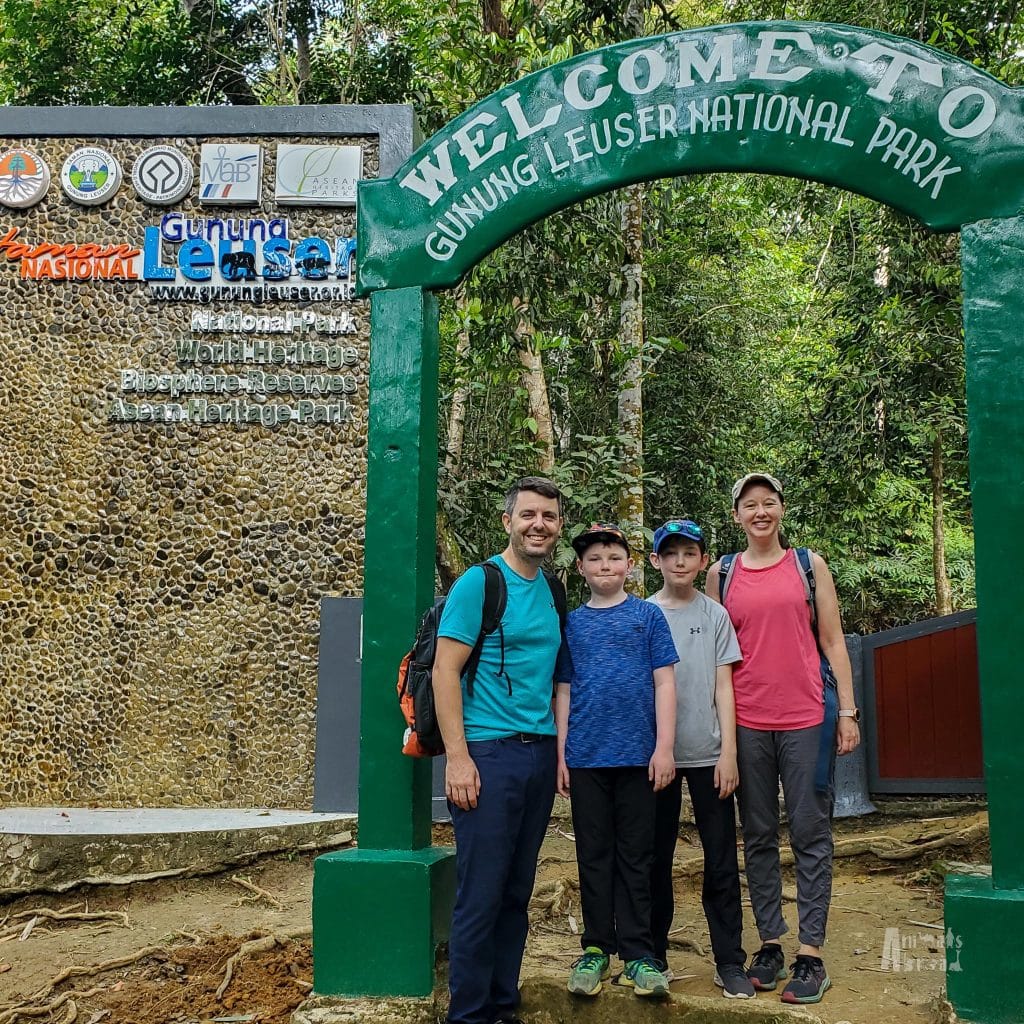
Setting Off into the Jungle
We began our trek early in the morning, filled with anticipation and nerves. The plan: an eight-hour jungle hike to our overnight camp, with the hope of spotting orangutans along the way.
We began our trek with a relatively easy walk along the river, heading toward the park entrance, soaking in the sounds of the jungle and the excitement of what lay ahead. But, just minutes into the hike, Mason accidentally brushed up against a wasp nest and was stung nine times. It was a rough start, but our guides acted quickly. They rushed into the jungle, located a specific flower, crushed it, and rubbed the crushed flower on his skin. Within minutes, the swelling and pain started to ease. It was incredible to see traditional knowledge in action and a good reminder that the jungle is unpredictable, and mishaps are part of the adventure.
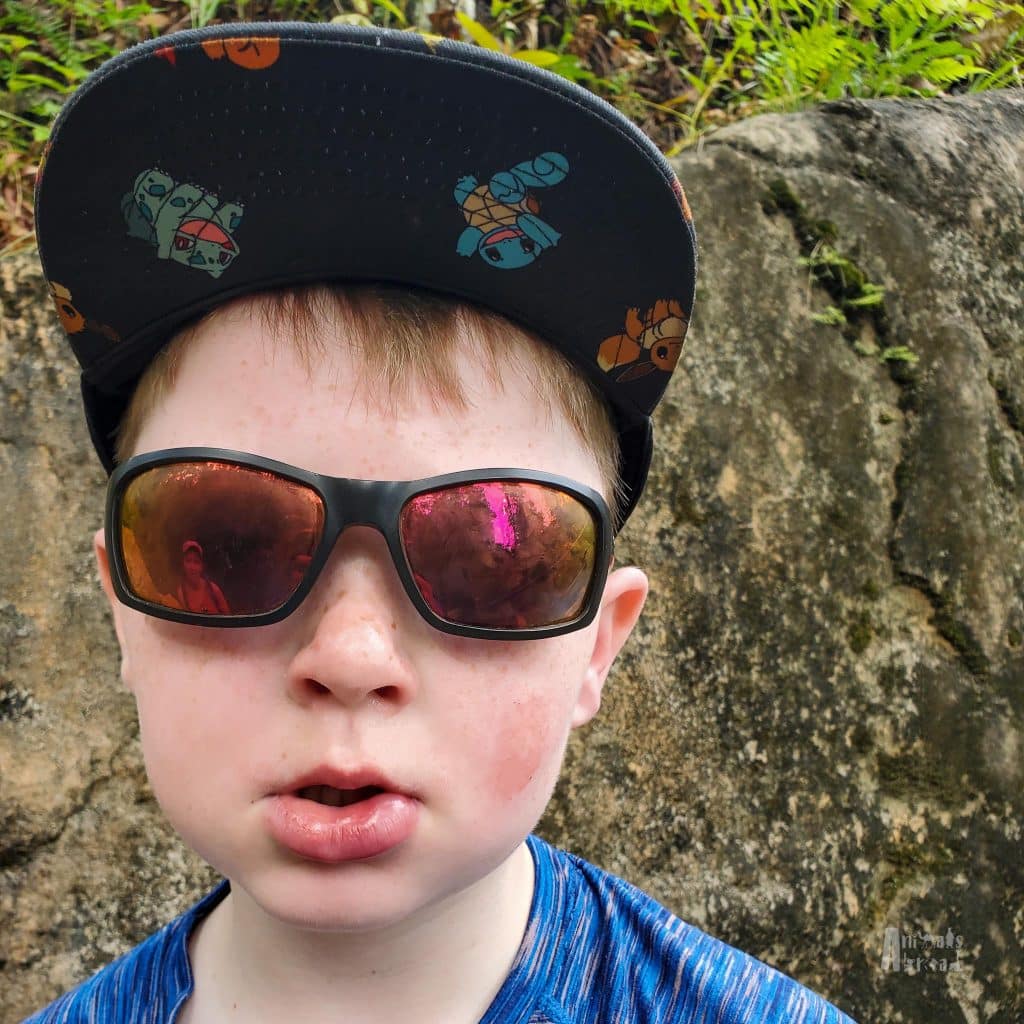
Face to Face with Soulful Eyes
It wasn’t long before we spotted our first orangutan—a lone female high up in the canopy. She moved with quiet confidence, swaying between the treetops. As she descended slowly toward us, it felt as though time had slowed down.
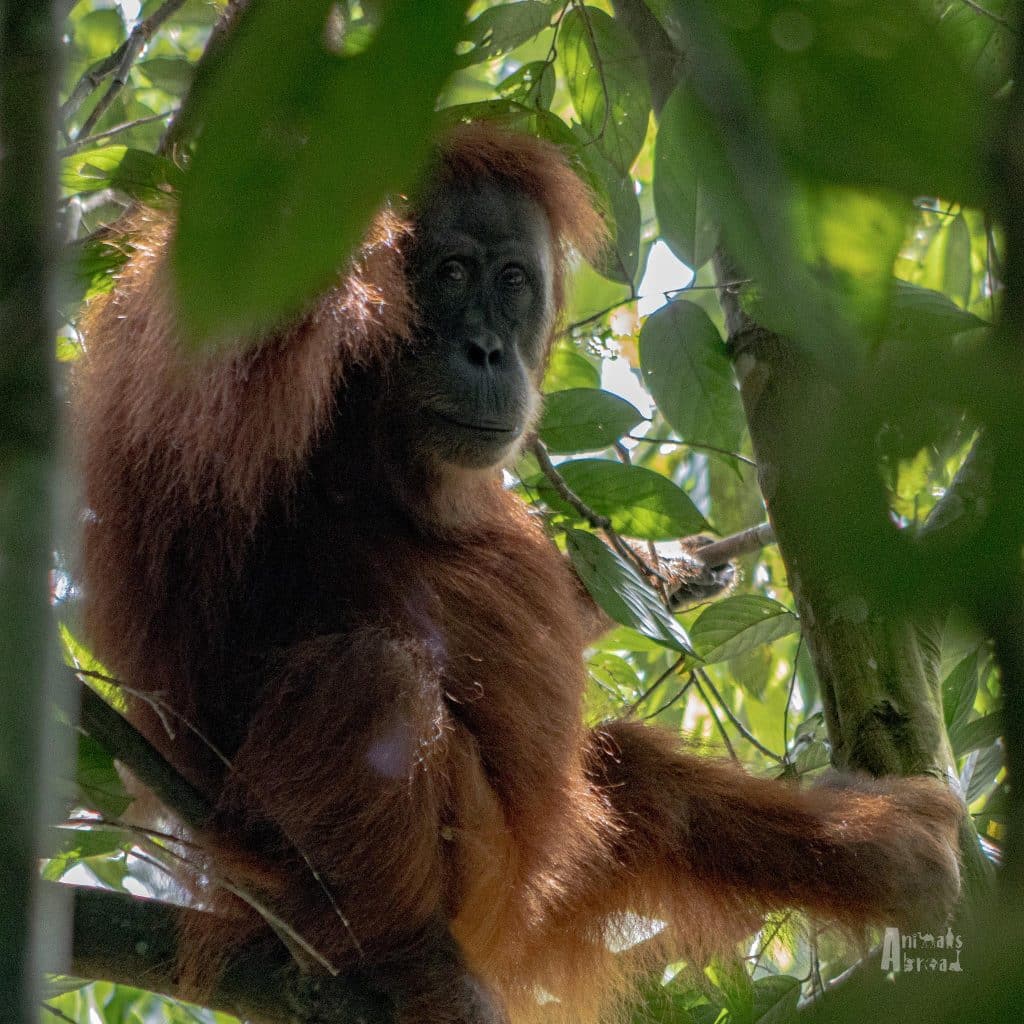
There was no fear in her eyes—only curiosity. She sat just above the ground, calm and observant, acknowledging our presence without alarm. The moment felt almost sacred, like being welcomed into her world. We stood wide-eyed, taking in her soulful gaze in silence.
We moved a little closer and captured our first “selfie” with these gentle beings, though somehow even pulling out a camera felt like an intrusion on such a peaceful moment. The orangutans’ calm, almost meditative presence was unlike anything we’d experienced with wildlife before.
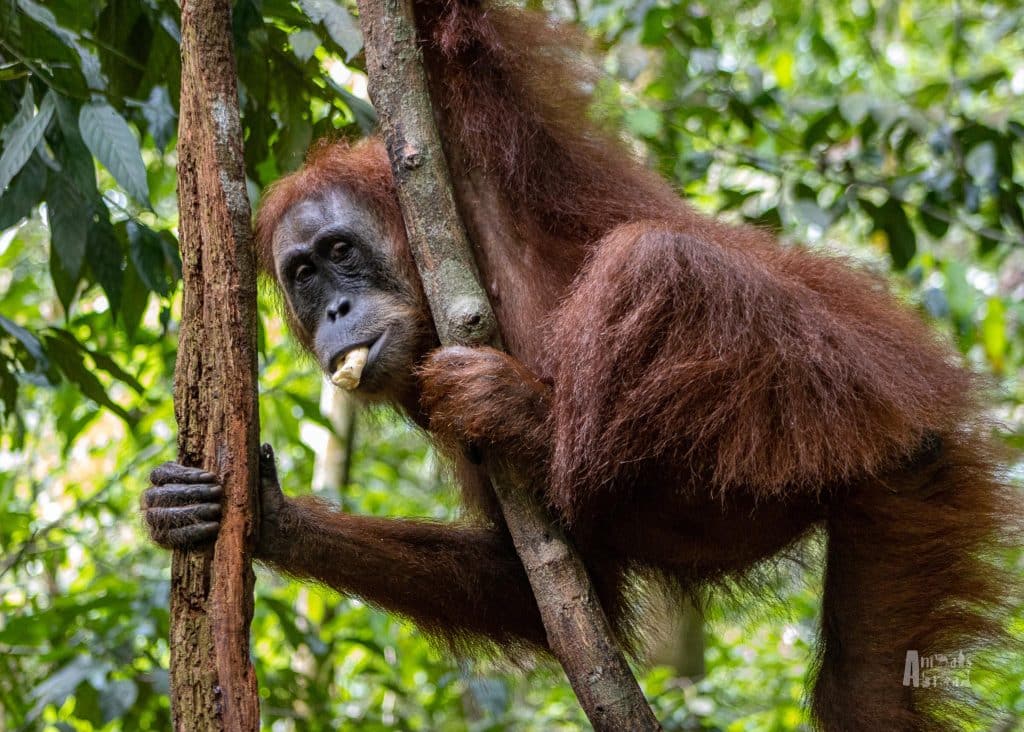
More Orangutans
Later, we spotted a mother and baby nestled high in the treetops. The baby playfully swung between branches, clinging to its mother when tired. Infants stay with their mothers for up to 7 or 8 years, learning everything they need to survive in the wild.
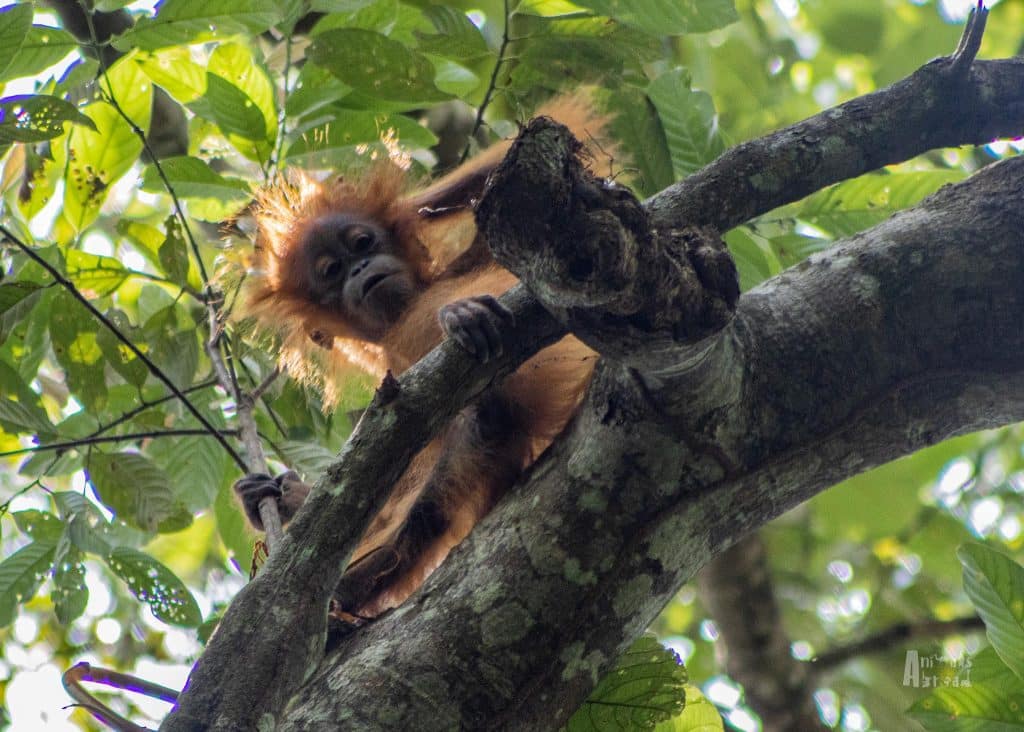
Soon after, we encountered a large male who was far less welcoming. He began tossing branches toward us—a clear reminder to give him space. Our guide motioned for us to move quickly and quietly. Lesson learned: Never stand beneath an orangutan!
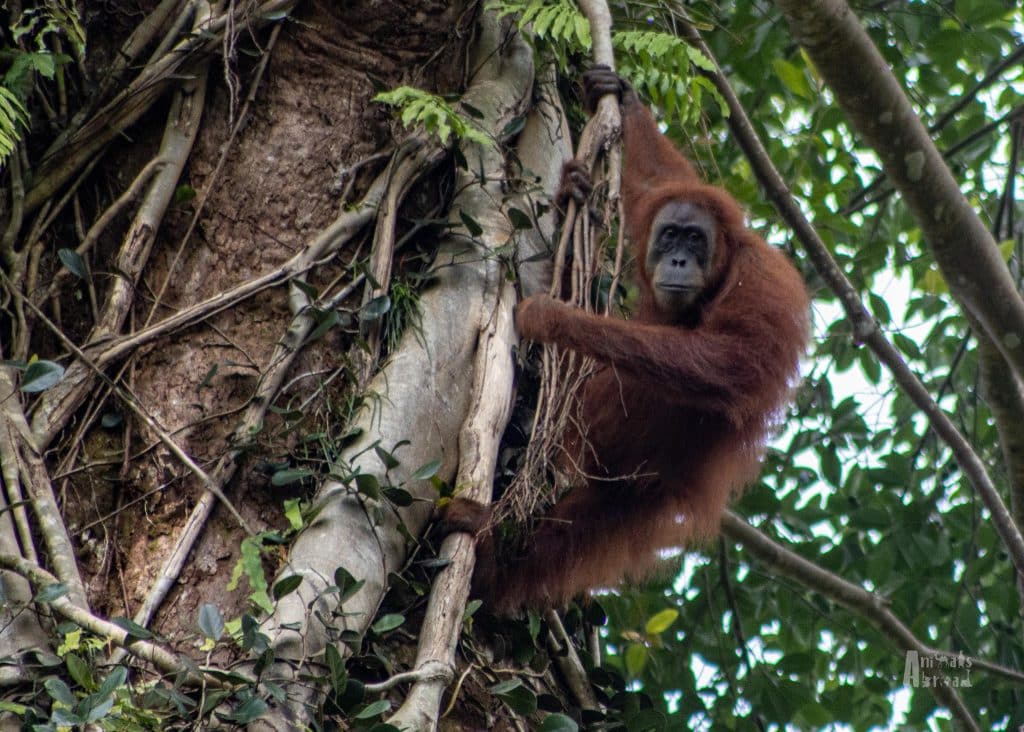
A Playful Encounter to Remember
Our final encounter was unforgettable. A mother and her infant rested on a fallen log in a small clearing. The baby put on quite a show—climbing, tumbling, and even attempting handstands. Adorable, she looked like she was made of rubber, contorting her body in every direction. We could have stayed there all day watching.
The mother seemed unbothered by the attention, and maybe even a little grateful for the entertainment break. Watching this sweet moment in such a remote setting was everything we had hoped for and more.
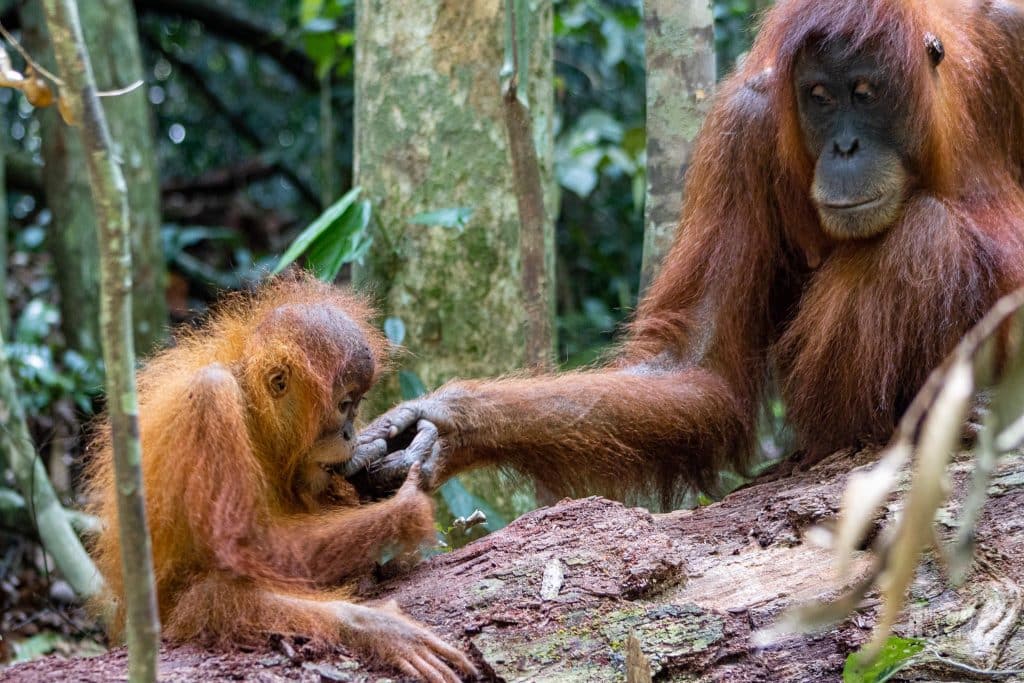
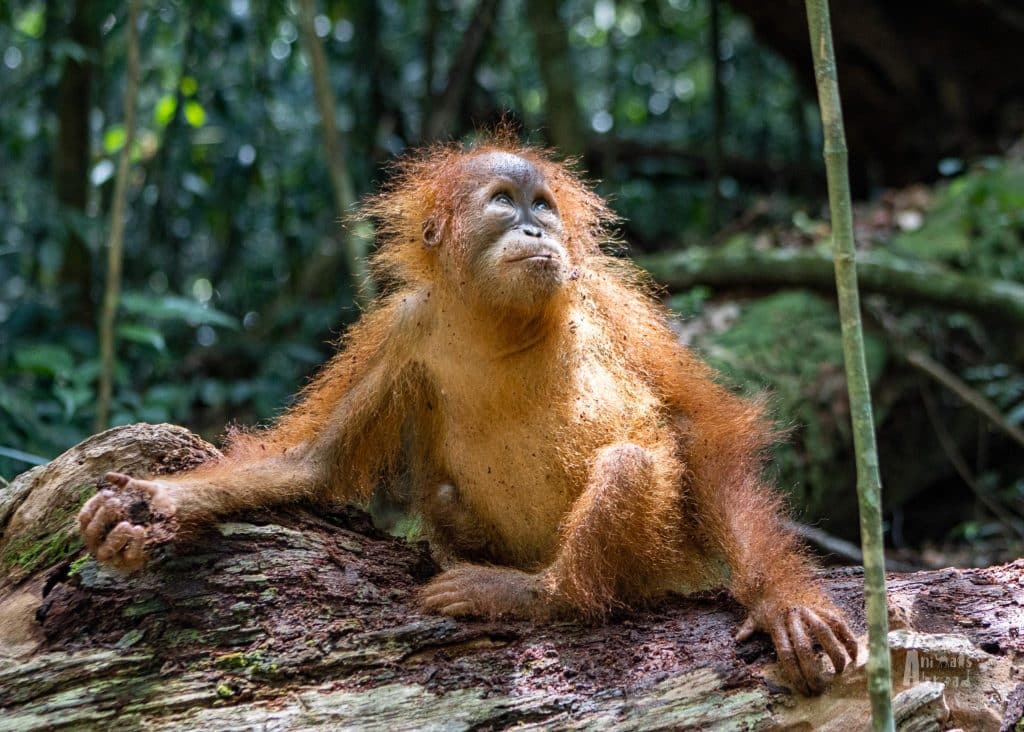
Hiking Deep Into the Jungle
As the day wore on, the terrain began to change. The trail narrowed and grew more rugged—thick foliage closed in around us, and we found ourselves ducking under branches, pushing through vines, scrambling over logs, tripping on roots, and navigating steep, slippery terrain. It quickly became clear that this wasn’t just a nature walk but a true jungle adventure.
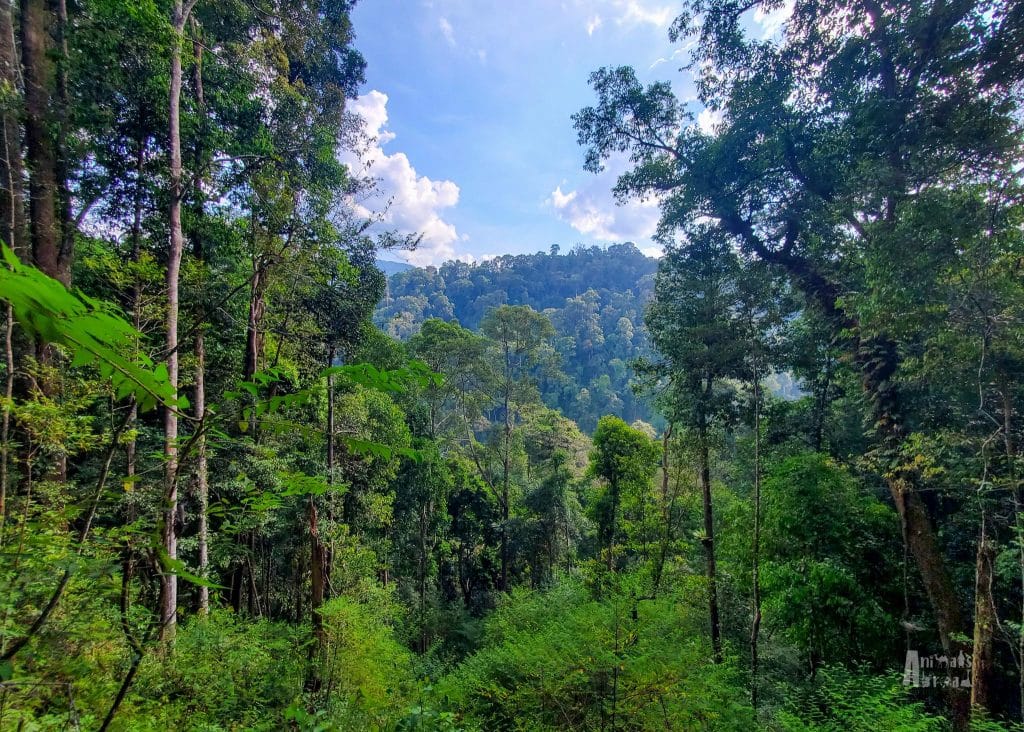
The final two hours of our first day were gruelling, as we climbed up a steep mountainside, then down again, crossed a river, and repeated the cycle over and over. It was here that I took a not-so-graceful tumble down a muddy slope, landing hard on some rocks and bruising my tailbone. It was weeks until I could sit again.
We were lucky that it was mostly overcast during our trek. Even so, the temperatures hovered in the 30s Celsius with humidity that felt like walking through mist. The jungle trek was one of our most physically challenging experiences. But we persevered and the boys showed us their resilience, tackling each challenge with determination and humour.
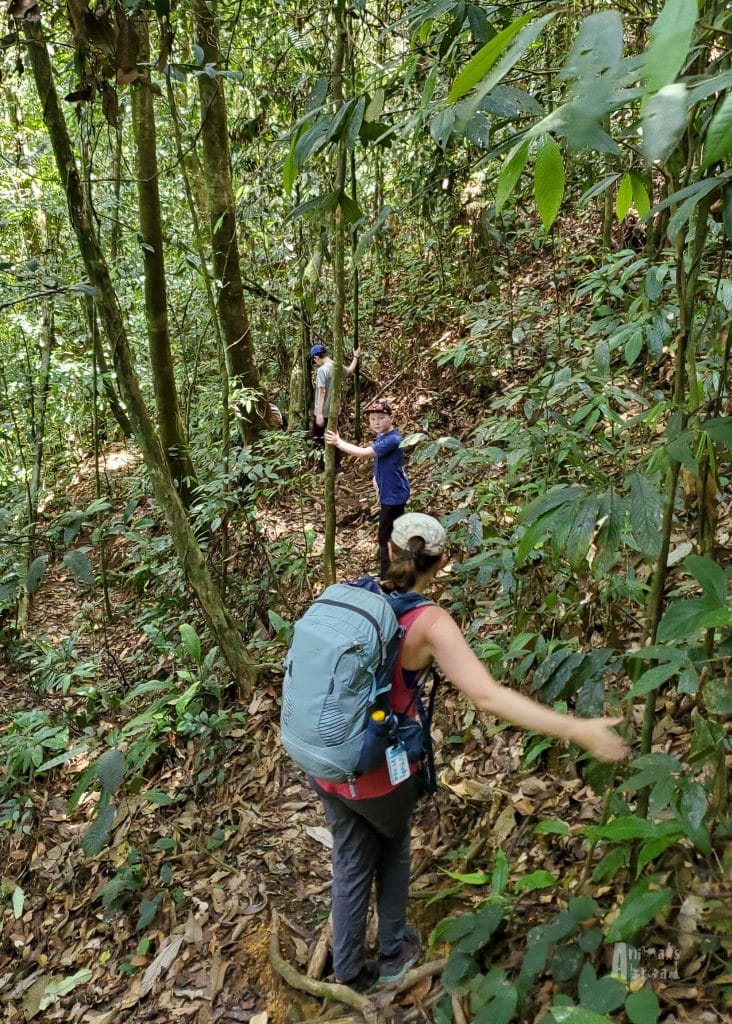
Our Jungle Camp
By the time we reached camp, we were exhausted. Swimming in the cool, clear river revived our spirits and soothed our aching muscles. Our camp was simple—a single open-air hut with two twin-size mattresses on the ground surrounded by mosquito nets. There was no power or running water. The communal toilet was wrapped in a tarp for privacy and flushed with river water.
Despite the rustic setup, the food was incredible. Our guides prepared buffets of fresh fruit and hearty meals of vegetable curry, chicken, tempeh, and potatoes. The boys devoured everything. That night, we played cards by flashlight with our guides, laughing and sharing stories while the sounds of the jungle echoed in the background.
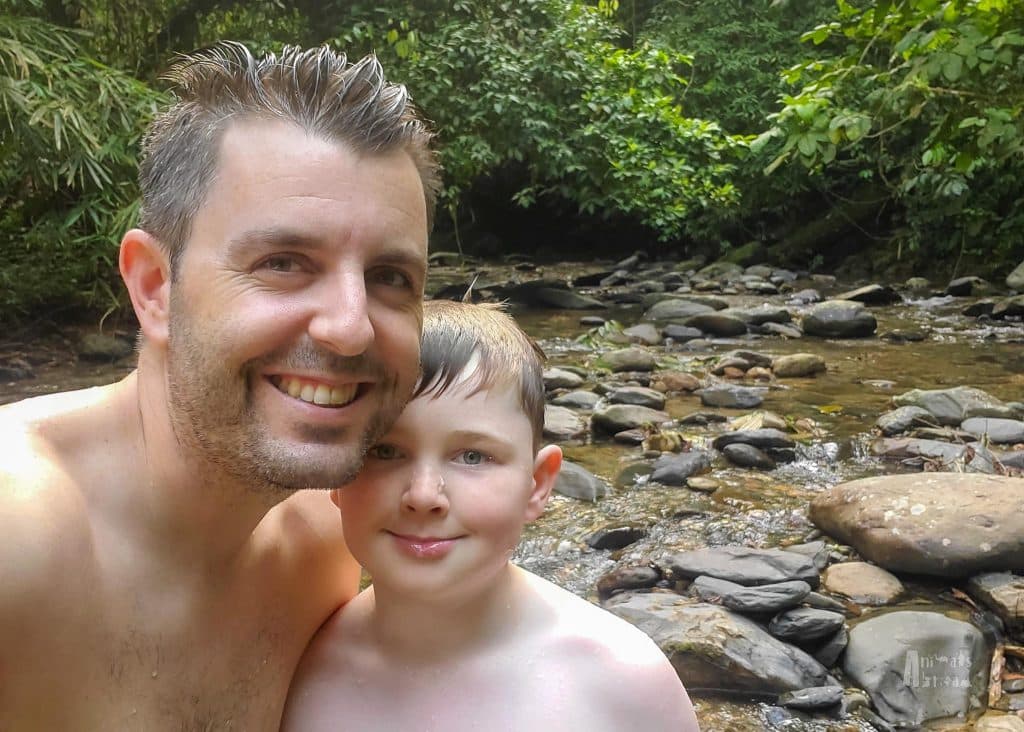
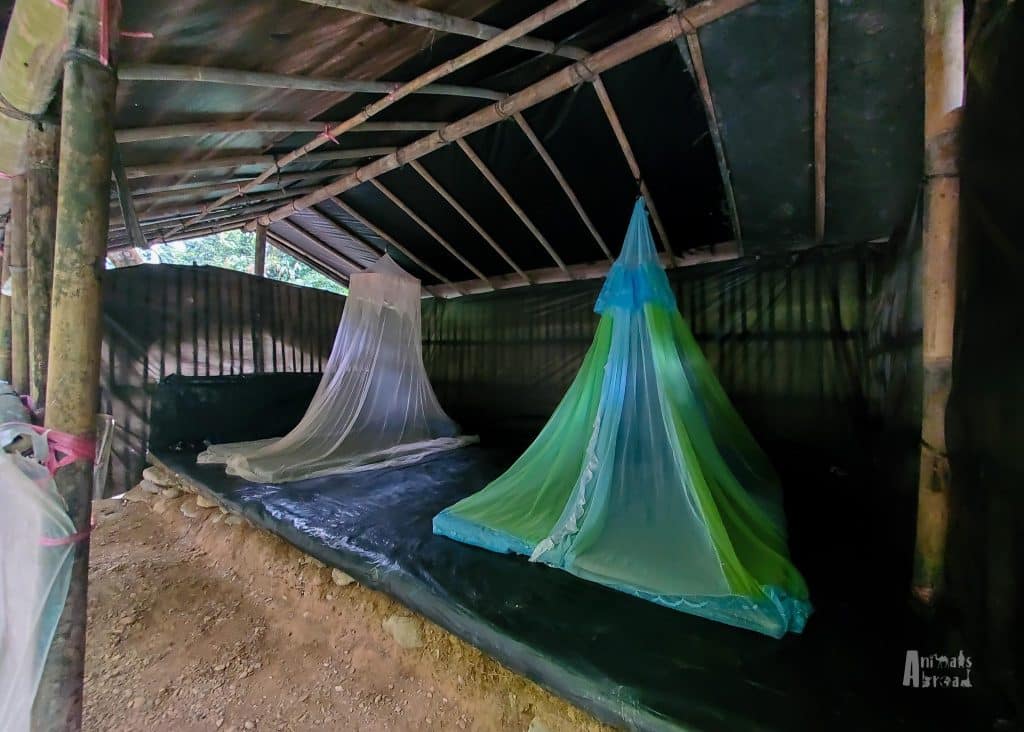
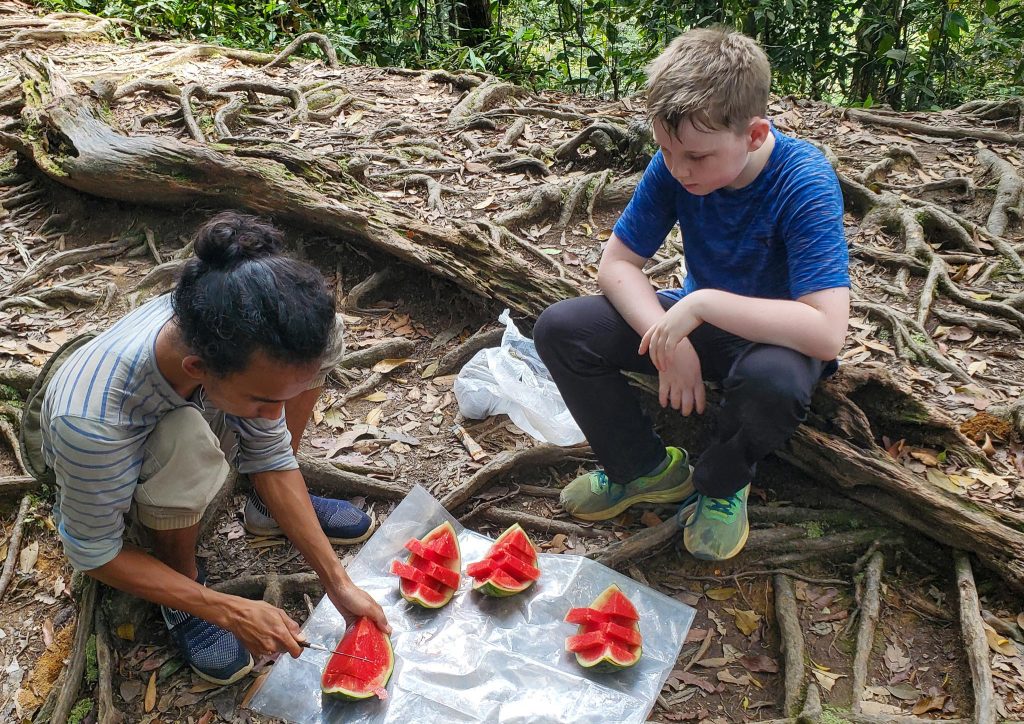
Rafting All the Way Home
We thought day two would be easier. It wasn’t. The hike was shorter but steeper, with descents so sharp we had to climb down backwards, using vines and roots to hold on while scanning for footholds. It felt like jungle rock climbing.
When we finally reached the riverbank, we were rewarded with our last surprise: rafting back to town! Four large inner tubes were tied together to make a raft for us and our guides. The final leg of our journey was full of laughter, splashes, and squeals of joy as we bounced through the rapids, drenched and grinning from ear to ear.
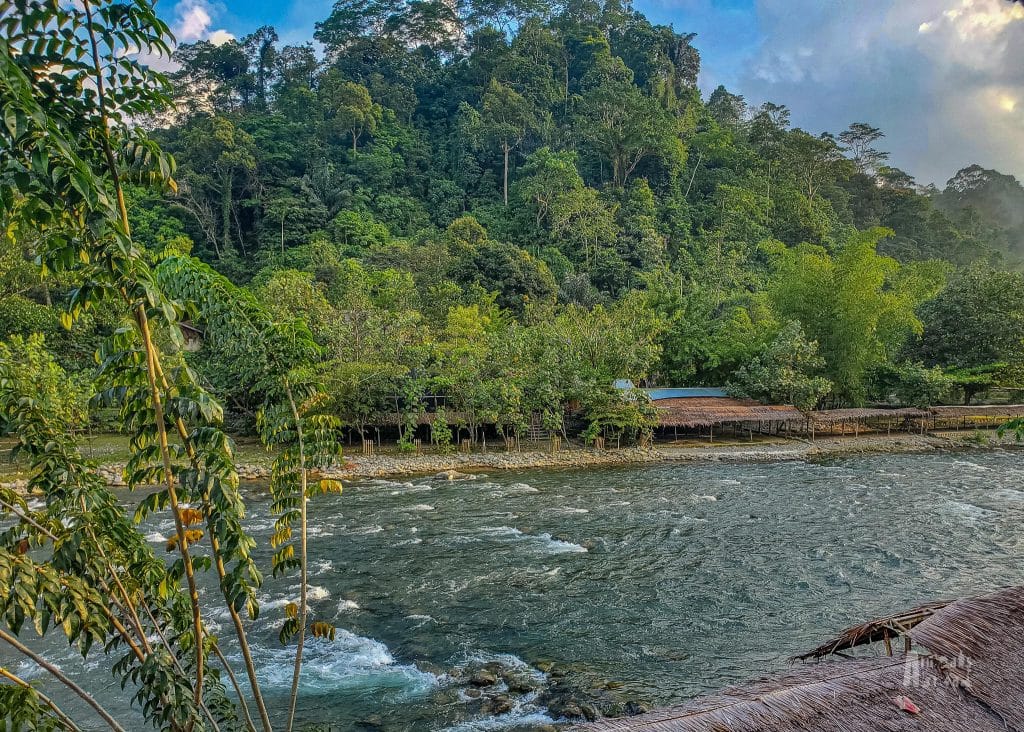
Tips for Trekking with Kids
• Prepare them: The hike is long, and animals aren’t guaranteed
• Pack light: Pack as little as possible to ease the load and make navigating the terrain easier.
• Stay hydrated: It’s extremely hot and humid. Encourage kids to drink small sips often.
• Cover up: Wear long sleeves and pants to protect from bug bites, leeches, and scratches.
• Wear comfortable shoes: You don’t need hiking boots. Sneakers are fine.
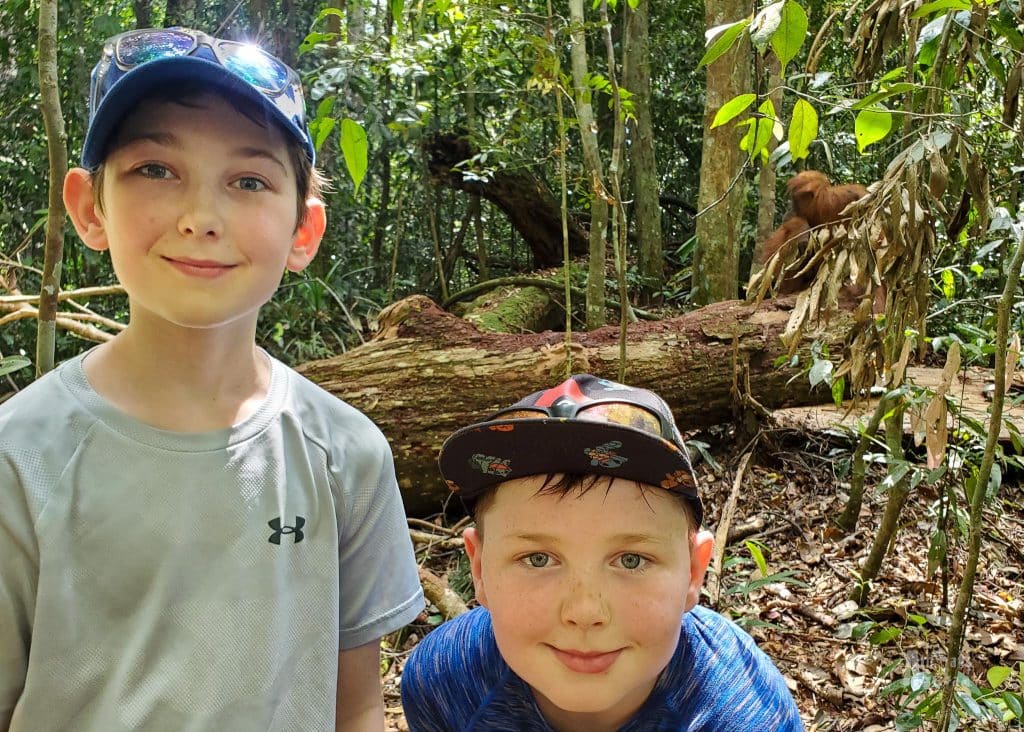
Packing List
We packed only the essentials: a clean set of clothes to change into for sleeping, bathing suits, toothbrushes, and a sweatshirt for the evening. Anything more would have made the trek harder.
Derek carried camera gear and his items, while I carried things for the boys and myself. The kids were responsible for their water bottles.
The guides carry provisions, including fresh fruit for snacks, so there was no need to pack food. But you are responsible for carrying drinking water. Filtered water bottles like LifeStraw were a game-changer. Rather than carrying litres of water on our packs, we refilled our water bottles from the river.
Tour Details
We booked with Thomas Jungle Tours and are so glad we did. Our guides were fantastic with the kids—patient, engaging, and full of knowledge. They showed the boys how to track wildlife and answered endless questions. One guide, Tony, even gave the boys hand-carved orangutan necklaces made from red river stones—a treasured souvenir.
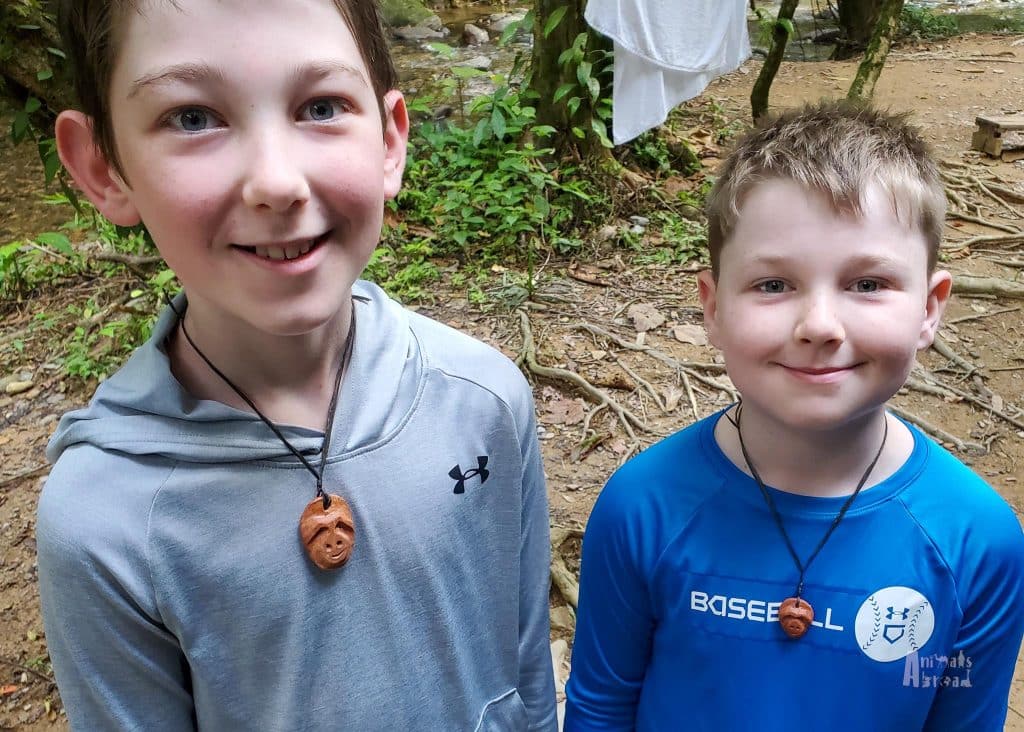
Getting There & Where We Stayed
We flew to Medan, then hired a private car for the 2-hour drive to Bukit Lawang. We stayed at Ida Guest House, a beautiful lodge with two four-poster beds, a ceiling fan, and a private bathroom (though only cold water in the shower!). The hotel’s open-air restaurant across the street overlooked the rushing Bohorok River and was the perfect place to relax before the trek.
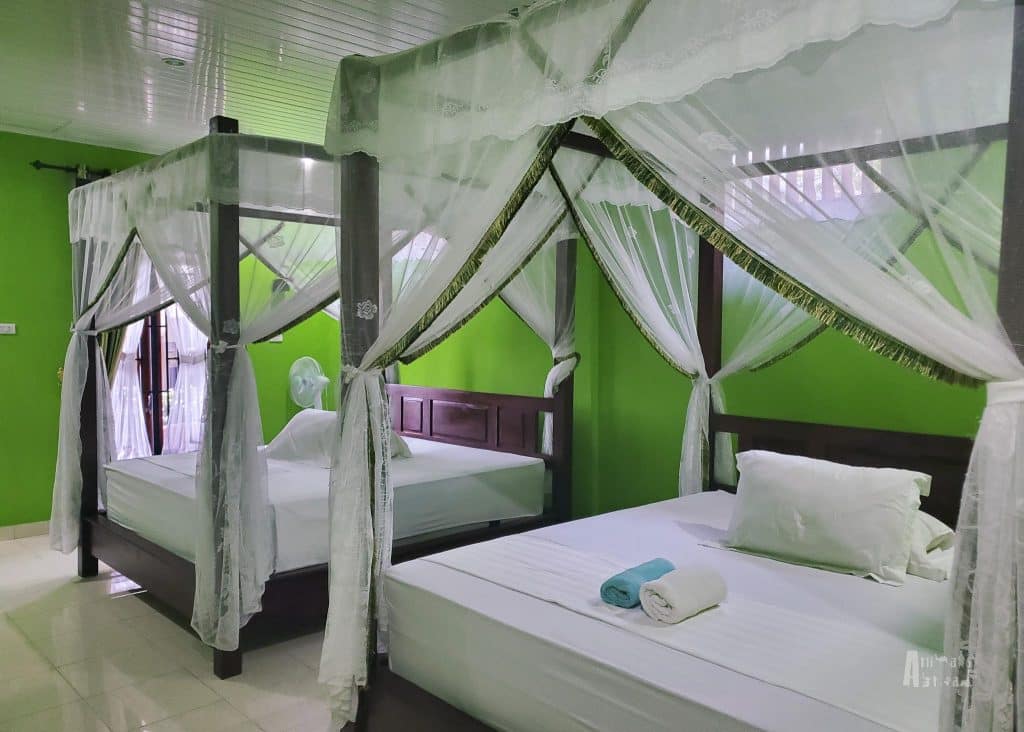
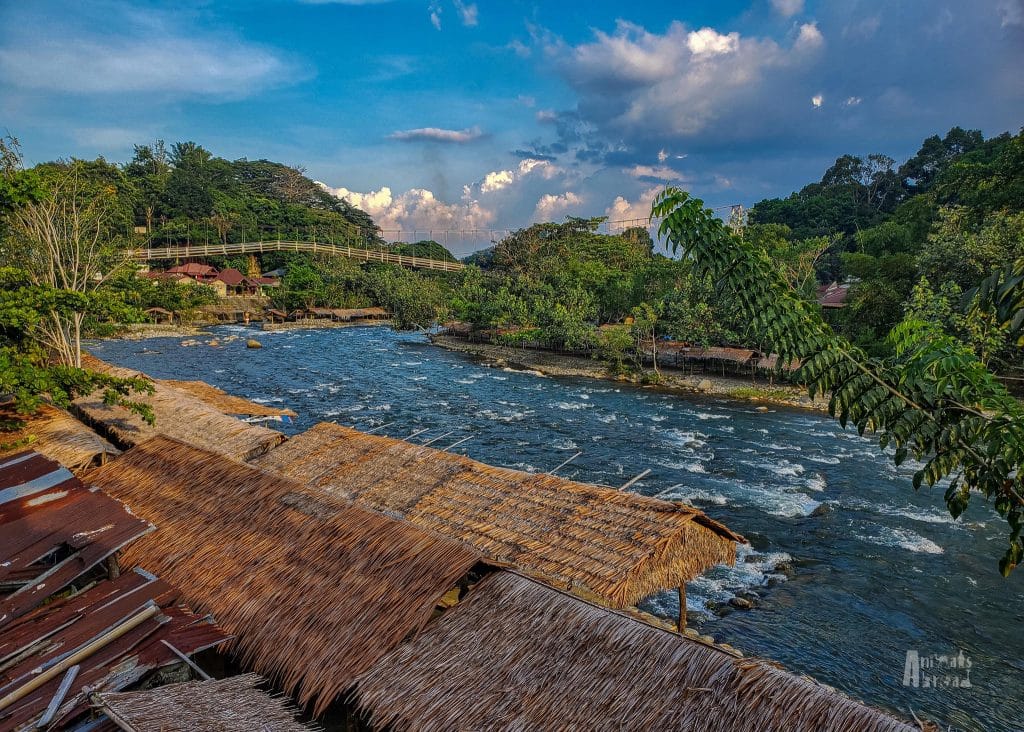
Would We Do It Again? In a Heartbeat!
On our final night of the world trip, we asked each other, “What experience pushed you furthest out of your comfort zone?” Without hesitation, all four of us answered: the orangutan trek.
We faced physical and mental challenges. But the reward—standing face-to-face with wild orangutans, trekking deep into a living, breathing jungle, and accomplishing something hard together as a family—made it one of the most powerful experiences of our journey. We didn’t just leave with photos. We left with pride, perspective, and the humbling memory of being guests in the orangutans’ home.
If you’re ready for an incredible adventure that will challenge and stay with you long after it’s over, start planning your journey into the Sumatra jungle. The orangutans are waiting.
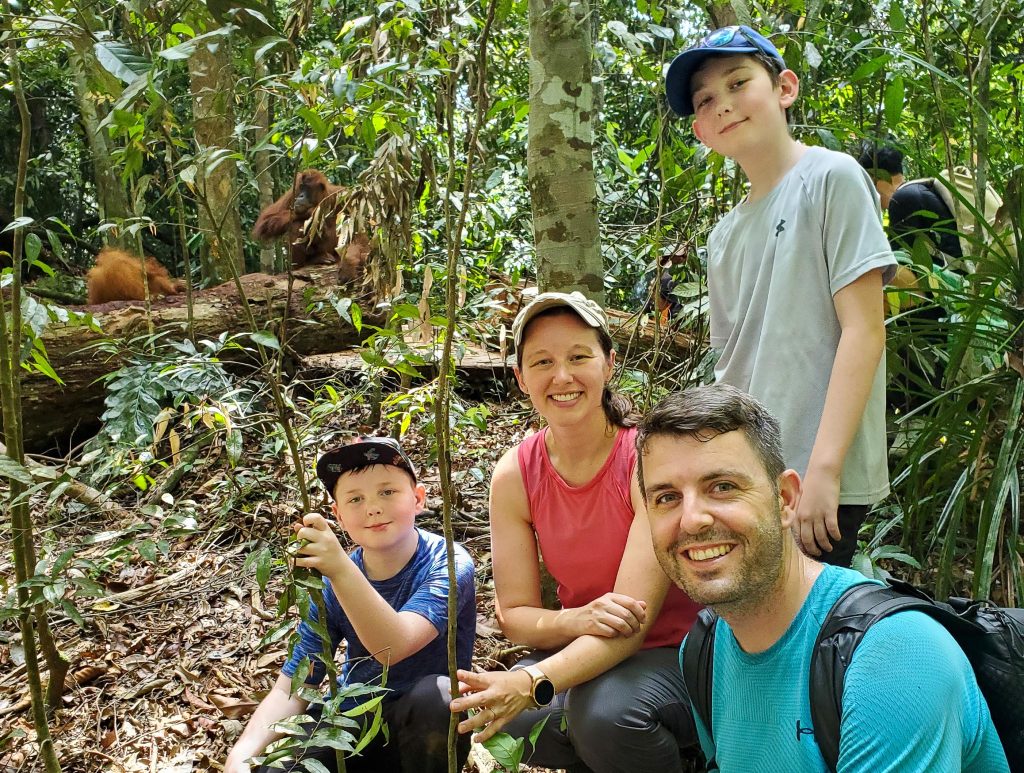
Ready to Explore Indonesia?
Check out these related posts to help plan your trip:
- A One-Day Family Adventure in Komodo National Park, Indonesia
- Top Things to Do with Kids on Gili Island, Indonesia

